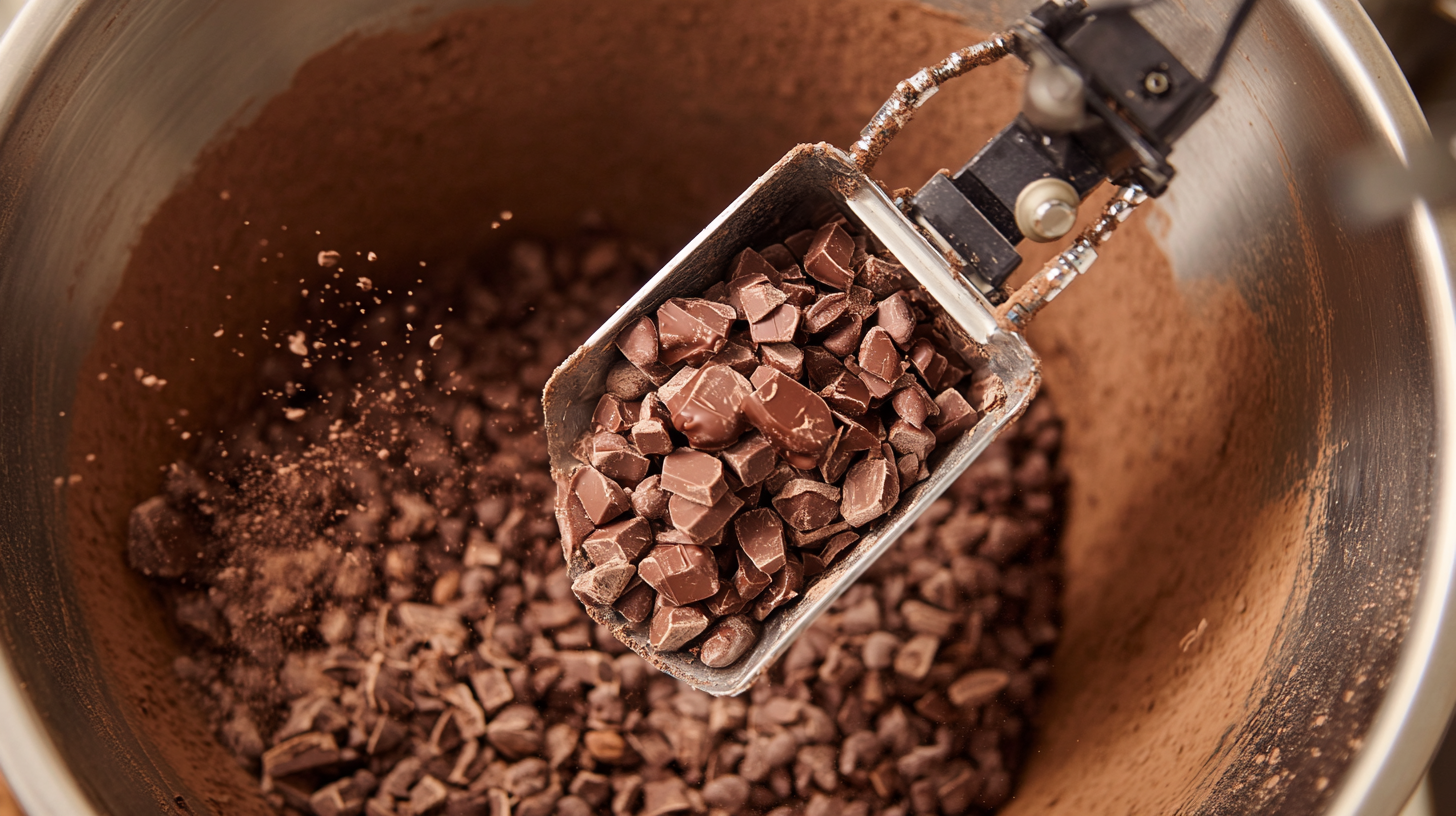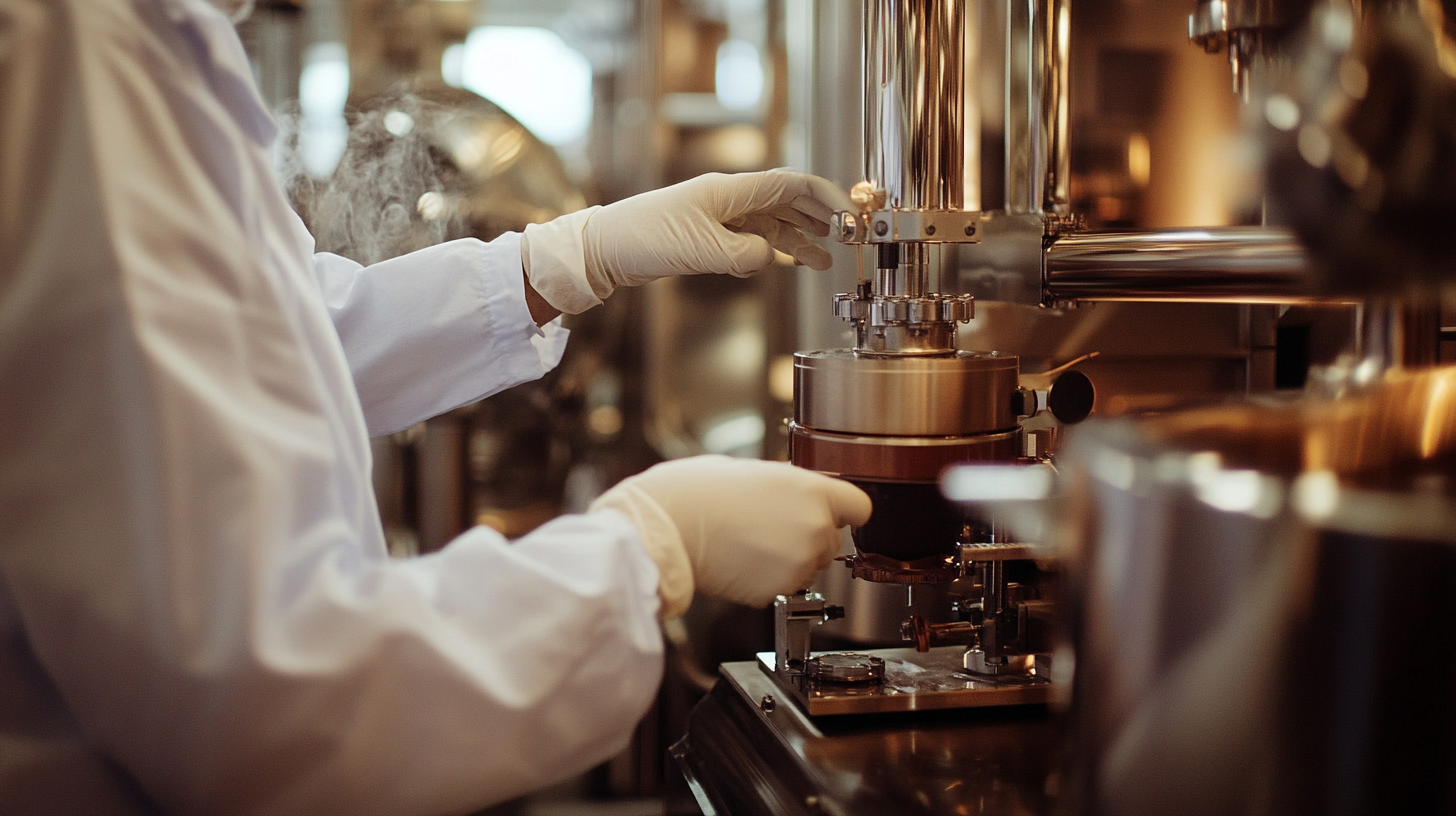The chocolate industry, a realm of indulgence and creativity, is constantly evolving to meet consumer demands for quality, efficiency, and sustainability. Among the key factors influencing the production of high-quality chocolate is the precision of temperature control during manufacturing. Enter innovative industrial temperature control solutions, which are transforming the landscape of chocolate production. With the advent of advanced technologies, the management of "temperatrice cioccolato industriale" not only enhances the flavor profiles and textures of chocolate products but also optimizes operational efficiency, reducing waste and energy consumption.
As manufacturers seek to revolutionize their processes, the focus on precision temperature control becomes increasingly critical. Traditional methods are being overshadowed by smart, automated systems that ensure the ideal conditions are maintained throughout the chocolate-making process. By leveraging these innovations, businesses can achieve greater consistency in their products while also responding to the ever-growing demand for sustainability in food production. This blog will explore how these groundbreaking advancements in temperature control are setting new standards in the chocolate industry, paving the way for a sweeter future.

In the ever-evolving landscape of chocolate production, precision temperature control has emerged as a critical factor driving the industry's advancements. As the ASEAN chocolate market is projected to reach a remarkable valuation of US$ 18.39 billion by 2033, manufacturers are increasingly recognizing the importance of innovative industrial temperature control solutions. Temperature consistency not only enhances the quality of chocolate but also optimizes production processes, allowing businesses to meet growing consumer demands efficiently. Emerging trends indicate that consumers are becoming more discerning about the quality of chocolate they purchase, with many seeking artisanal products crafted with care. To satisfy this shift, chocolate producers must implement precise temperature control techniques. By maintaining optimal temperatures during various stages of production—from tempering to cooling—manufacturers can ensure the perfect texture and flavor profile that today’s consumers crave. This commitment to quality through innovation is essential as the Asia-Pacific region, particularly ASEAN countries, continues to gain traction in the global chocolate market. As we look ahead, the integration of cutting-edge temperature control technologies will play a significant role in shaping the future of chocolate production. From real-time monitoring systems to automated adjustments based on environmental conditions, these advancements promise to enhance not only the quality of the product but also the efficiency of production lines. With the ASEAN chocolate market on the brink of substantial growth, embracing these innovative solutions will be vital for manufacturers aiming to thrive in an increasingly competitive landscape.

Temperature plays a crucial role in the production of high-quality chocolate. Even minor fluctuations in temperature can significantly affect the flavor and texture of the final product. During various stages of chocolate production, from roasting the cocoa beans to tempering the chocolate, maintaining an optimal temperature is essential. If the temperature is too high or too low, the delicate balance of flavors can be disrupted, leading to a less than satisfactory product.
One of the most critical phases that illustrate the importance of temperature is the tempering process. This process involves carefully raising and lowering the chocolate’s temperature to stabilize the cocoa butter crystals. If done correctly, tempering ensures a smooth texture and a beautiful shine, while also preventing unwanted fat bloom. However, an oversight in temperature control can result in a gritty or dull chocolate, which fails to meet consumer expectations.
Moreover, the cooling phase after molding is just as important. Inadequate temperature management during cooling can lead to defects such as uneven texture or cracks on the surface. Innovative temperature control solutions are revolutionizing chocolate production by providing consistent monitoring and adjustment throughout the manufacturing process. These advancements not only enhance the quality of chocolate but also streamline production, allowing chocolatiers to focus on crafting exquisite flavors and textures that delight chocolate lovers around the world.

In the realm of chocolate production, maintaining precise temperature control is fundamental to achieving optimal quality and consistency in the final product. Industry standards emphasize that chocolate should be processed at specific temperature ranges to ensure smooth texture and rich flavor profiles. According to a report by the Barry Callebaut Group, fluctuations in temperature during chocolate production can lead to undesirable effects such as fat bloom, which significantly impacts the product's aesthetic and taste.
Benchmarking temperature control is crucial, with studies indicating that a deviation of just a couple of degrees can alter the crystallization process of cocoa butter. A research publication from the Institute of Food Technologists highlights that maintaining a constant temperature of around 32°C during tempering can enhance the stability of chocolate, resulting in improved sheen and snap. This demonstrates the necessity for innovative industrial temperature control solutions that not only adhere to these rigorous standards but also integrate advanced monitoring systems to ensure real-time adjustments.
As the chocolate industry evolves, the adoption of smart temperature control technologies is on the rise. Recent data shows that manufacturers who implement these solutions experience a 15% increase in production efficiency, as well as a significant reduction in waste. This shift towards precision engineering is not merely a trend but a vital step toward revolutionizing chocolate production, ensuring producers can meet the growing demand for high-quality chocolate products while maintaining competitive standards in the market.

In the dynamic landscape of chocolate manufacturing, innovative technologies such as smart temperature control systems are leading the way in enhancing production efficiency and quality. Recent advancements in industrial temperature control are showcasing the significant potential of these solutions to optimize production processes. By maintaining precise temperature parameters, manufacturers can ensure the consistent quality of chocolate products, ultimately reducing waste and improving overall profitability.
Tetra Pak’s introduction of “Factory Sustainable Solutions” highlights the industry’s shift towards environmentally responsible practices. With customized technologies aimed at minimizing energy and water consumption, producers are not only addressing cost concerns but also contributing to sustainability goals. Implementing smart temperature control in conjunction with these sustainable strategies facilitates a harmonious blend of efficiency and environmental consciousness, vital in today's food and beverage sector.
Moreover, the integration of artificial intelligence in manufacturing processes is revolutionizing decision-making capabilities. AI-driven systems can leverage real-time data to adjust temperature settings, ensuring optimal conditions for chocolate production while reducing energy costs. Reports suggest that industries adopting AI technologies see an increase in operational efficiency by up to 30%, emphasizing the transformative impact of digitalization in food manufacturing.
As the industry moves towards a digital transformation, the interplay between advanced temperature control systems and AI is poised to shape the future of chocolate production. With these innovations, manufacturers can not only enhance product quality but also drive sustainable practices, ultimately positioning themselves for success in an increasingly competitive market.
The chocolate production industry is undergoing a transformative period, driven by advancements in industrial temperature control solutions. A recent report from the Cocoa Research Institute highlights that temperature fluctuations during production can lead to inconsistencies in flavor and texture, ultimately affecting the product quality and yield. By integrating advanced temperature controls, manufacturers can ensure a uniform production environment, leading to more consistent products.
Investing in innovative temperature control technology can yield significant cost benefits. According to a cost-benefit analysis by the Food Processing Association, factories that upgraded their temperature management systems saw an average increase in yield by 15% and a reduction in spoilage rates by up to 20%. This translates to a notable return on investment, considering the high premium associated with quality chocolate. Furthermore, as consumers increasingly demand premium chocolate offerings, maintaining strict control over production conditions becomes essential to meeting market expectations.
Moreover, the International Cocoa Organization has noted that companies adopting state-of-the-art temperature control systems report not only improved product quality but also enhanced energy efficiency. With energy costs rising, integrating these systems can result in lower operational expenses. Overall, the strategic implementation of advanced temperature controls in chocolate production is not merely a trend but a necessary evolution towards optimizing yield, enhancing quality, and driving profitability.
Utilizziamo i cookie per migliorare l'esperienza utente. Per maggiori informazioni, consulta la nostra Cookie Policy.